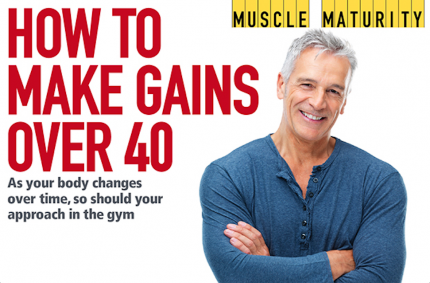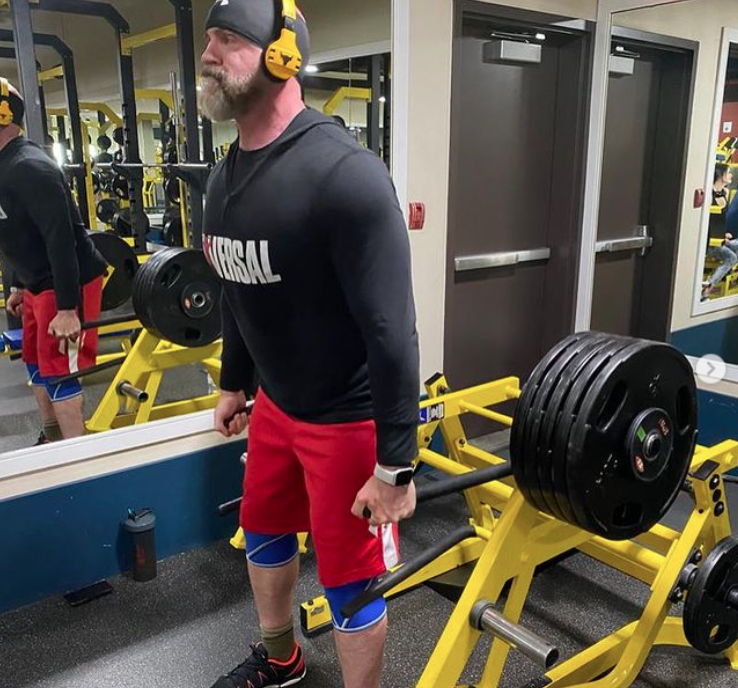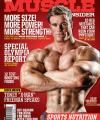Athlete Insider

Having worked the health and fitness industry for well over 25 years, Domenic is known by many for signing and working with some of the top athletes, celebrities and models in the health and fitness industry. He’s worked with well over 300 athletes including major league professionals, IFBB Pros, Mr./Ms. Olympias, Celebrity Trainers, Actors, WWE Stars, Professional MMA Fighters and some of the industry’s top name brand companies. In addition to working with the top supplement companies in the world, he has had the privilege of working on the sales and marketing of world class events as the Super Bowl, Pro Bowl, the PGA Tour and CTV Olympic Games Broadcast.
In 2011, Domenic was appointed to the IFBB Press Commission to overlook media operations in North America. A few years later in 2014, he was honored with the distinguished IFBB Silver Medal of Achievement for outstanding contributions towards the promotion of Sport, Fitness and a Healthy Lifestyle. In 2015, the IFBB bestowed an Honorary Master’s Degree in Bodybuilding and Fitness Methods. And in 2019, the industry honored Domenic with the Lifetime Achievement Award. Reserved for industry leaders and accomplished athletes, this honor recognizes an individual(s) whose career and leadership has greatly impacted and contributed to the growth, advancement and promotion of the health and fitness industry.
Domenic studied Kinesiology and Health Sciences while attending York University in Toronto and graduated with a degree in Human Psychology.

How to Make Gains After 40
As your body changes over time, so should your approach in the gym
Look around your local gym and you’ll see a number of folks among the hordes of teens and twentysomethings committed to fitness who are well into their 50s, 60s, and even beyond. While motivation often changes with age—many of these individuals train more for quality of life and as part of a disease-prevention strategy than for sex appeal or winning competitions—there’s no doubt about the effectiveness of resistance training regardless of one’s stage in life. And, no doubt, you can put on muscle in your more mature years.
That, however, doesn’t mean you can train the same way you did in your 20s. If you haven’t learned for yourself what lessons rise to the top as you grow older, here’s a summary of how you should be adjusting your workouts.
1. Good form becomes more important than ever.
 While MUSCLE INSIDER advises good form all the time, it’s especially important as you get older. The reason, says world champion powerlifter and strongman Josh Bryant, MS, CSCS, an elite strength coach at Metroflex Gym in Arlington, Texas, is that strength is a skill.
While MUSCLE INSIDER advises good form all the time, it’s especially important as you get older. The reason, says world champion powerlifter and strongman Josh Bryant, MS, CSCS, an elite strength coach at Metroflex Gym in Arlington, Texas, is that strength is a skill.
“To develop strength, you need to do [exercises] over and over with perfect form. If strength is the objective and you’re over 40, view technical inadequacies as a form of weakness. More now than ever, you must look beyond the equation of brute strength and master the movements you’re doing.”
Bryant further recommends older trainers reduce the number of sets in which they train to failure, especially on heavy multi-joint movements. “I don’t care who you are, at the end of a double drop set, form goes out the window.”
2. Go lighter on single-joint movements.
 As you age, especially if you are a longtime lifter or played sports in high school or college, accumulated damage to your joints—especially your elbows, shoulders, and knees—makes you more vulnerable to injury. Whereas multi-joint movements spread the stress across several muscle groups and joints, single-joint ones don’t, which makes them potentially more dangerous to joints.
As you age, especially if you are a longtime lifter or played sports in high school or college, accumulated damage to your joints—especially your elbows, shoulders, and knees—makes you more vulnerable to injury. Whereas multi-joint movements spread the stress across several muscle groups and joints, single-joint ones don’t, which makes them potentially more dangerous to joints.
“For this reason, I never recommend that over-40 lifters go heavy on isolation moves,” says Bryant. “While you don’t need to altogether avoid single-joint exercises, the key is to keep [them] strict with a moderate weight.” Bryant advises against cheat [biceps] curls and swinging lateral raises, for example, and trying to set PRs on such movements.
3. Follow a more extensive warm-up.
 Everytraining article should start with a warm-up, but when you’re over 40, it becomes imperative because of accumulated injuries over time and advancing mobility and flexibility issues.
Everytraining article should start with a warm-up, but when you’re over 40, it becomes imperative because of accumulated injuries over time and advancing mobility and flexibility issues.
But rather than limit yourself to a 5- to 10-minute spin on the bike, include a dynamic stretching routine as well, which adds just a few more minutes to your session. Dynamic stretches are those in which movement—unlike static stretches—takes place. Think high kicks, alternating knee to chest, walking quad stretch (heel to glute and lightly pull), inchworms, etc. Even foam rolling aids your warm-up. Make sure you focus on dynamic stretches and foam rolls that target the muscle groups you plan to work that day.
Of course, you should still start your routine with lightweight sets of your first exercise.
4. Use planned deload weeks more frequently.
 Whereas younger lifters can push full bore in the gym all the time, the older lifter needs planned deload workouts—and even weeks. That means backing off in your workouts, but it doesn’t mean sitting around the house.
Whereas younger lifters can push full bore in the gym all the time, the older lifter needs planned deload workouts—and even weeks. That means backing off in your workouts, but it doesn’t mean sitting around the house.
In backing off in weight and volume, Bryant suggests focusing on reinforcing technique and perfecting your form. “A good place to start is three weeks of intense training followed by a lighter week with less volume,” he says. “Start with about 70 percent of your previous total training volume on deload weeks, dialing back both the number of sets and reps.”
Get articles like this one delivered to your email each month by signing up for Muscle Insider’s mailing list. Just click here.
*Some images courtesy of Instagram

